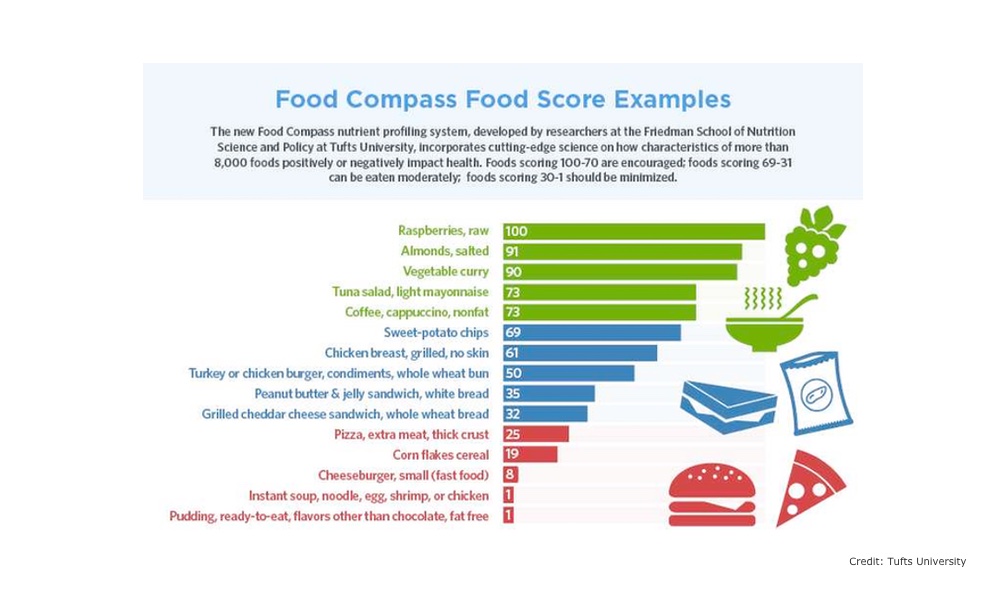It just got a lot easier to navigate the road to better nutrition. Food Compass profiles the nutrients in foods and assigns foods a score based their impact on health. Now consumers, food companies, restaurants, cafeterias and officials who make nutrition policy will find it easier to choose and promote healthier meals.
Food Compass has been developed and tested by a team of experts at the Friedman School of Nutrition Science and Policy at Tufts University, using cutting edge science and a national database of over 8,000 foods and beverages that Americans typically consume.
“Once you get beyond ’eat your veggies, avoid soda,‘ the public is pretty confused about how to identify healthier choices in the grocery store, cafeteria, and restaurant,” said Dariush Mozaffarian of the Friedman School, in a statement. “Consumers, policy makers, and even industry are looking for simple tools to guide everyone toward healthier choices.”Scores range from one (least healthy) to 100 (most healthy), with a score of 70 indicating a healthy bet. Any food or beverage that scores 30 or lower should be consumed only occasionally.
The risk of undernutrition was also taken into consideration, particularly for the elderly, mothers and young children.
Equal consideration was given to healthful and harmful factors in foods. Food Compass uses an objective scoring system for all foods, beverages, mixed dishes like pizza and whole meals, taking into account the latest science on nutrients, ingredients, food processing techniques, phytochemicals and additives.
Scores range from one (least healthy) to 100 (most healthy). A score of 70 or above pretty much guarantees that a food or beverage promotes health. Foods that fall within the range of 31 to 69 should be eaten in moderation; and any food or beverage that scores 30 or lower should be consumed only occasionally.
Fruits received an average score of 74 with almost all raw fruits receiving a score of 100. The average score of vegetables was 69 with starchy vegetables at 43. Legumes, nuts and seeds scored 79. Meat scores included 25 for beef, 43 for poultry and 67 for seafood. The average Food Compass score across major food categories was 43.
The new food scoring system is superior to existing food evaluation systems that mostly focus on harmful factors, only emphasize a few nutrients and use subjective measures to group and score foods differently. It is designed to be expanded and evolve based on continuing discoveries in areas such as gastrointestinal health, immune function, brain health, bone health, and physical and mental performance; and it will consider the issue of food sustainability in the future.
As a nutritional scoring system, Food Compass could eventually be used to rate and encourage food manufacturers to develop healthier foods or reformulate their existing products. It also offers a way to convey information on healthy and unhealthy foods to local and national policymakers. It can serve as a simple way to profile the nutritional value of foods in restaurants and cafeterias and guide consumers as they seek to make healthier food choices.
The study is published in Nature Food.





